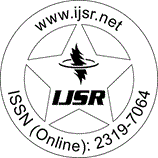Downloads: 14 | Views: 203 | Weekly Hits: ⮙1 | Monthly Hits: ⮙2
Research Paper | Pediatrics and Child Health | India | Volume 13 Issue 10, October 2024 | Rating: 6 / 10
Study on Prevalence of Iron Deficiency Anaemia in Children of 6 Months - 12 Years of Age in Barabanki District, Uttar Pradesh
Dr. Sai Kishore Kancheti, Dr. Yusuf Ahmed, Dr. Y T Dileep Kumar, Dr. Shubhi Agarwal, Dr. Mohd Kashif
Abstract: Background & Objectives: Iron Deficiency Anemia (IDA) is a major public health concern, particularly in developing countries like India. IDA affects various physiological functions, including cognitive and physical development in children, leading to decreased learning capacity and productivity. Thus, the objective of the study aims to determine the prevalence of IDA in children aged 6 months to 12 years in the Barabanki district of Uttar Pradesh, India. Material & Methods: An observational cross - sectional study was conducted over 18 months from July 2022 to January 2024 at the Dr. KNS memorial Institute of Medical Sciences, Barabanki. The study included 190 children aged 6 months to 12 years. The dataset categorizes children into three age groups: 6 - 59 months, 5 - 9 years, and 10 - 12 years. The distribution of these categories is fairly balanced between the first two groups, with 82 children (43.2%) in the 6 - 59 months group and 83 children (43.7%) in the 5 - 9 years group. The 10 - 12 years category is smaller, comprising 25 children (13.2%). Haemoglobin was estimated by sahli?s method. Total iron, Total Iron - Binding Capacity (TIBC) was estimated by ferrozine method on an automated chemistry analyser with an available reagent kit and serum ferritin were assessed by Immunoenzymometric sequential assay. Results: For the combined group of 190 children, 89 (46.84%) were normal, in total, 101 children (53.16%) were anaemic.20 (10.53%) had mild anaemia, 66 (34.74%) had moderate anaemia, and 15 (7.89%) had severe anaemia. Conclusion: As prevalence of anemia is >50%, Addressing iron deficiency anemia in children is crucial for their overall growth and development. Health policies should focus on improving dietary iron intake, enhancing public awareness, and providing iron supplements to high - risk groups. Additionally, regular screening and monitoring of children?s iron status can help in early detection and treatment of anemia.
Keywords: Anemia, children, iron deficiency anemia, 6 months - 12 years
Edition: Volume 13 Issue 10, October 2024,
Pages: 258 - 262
